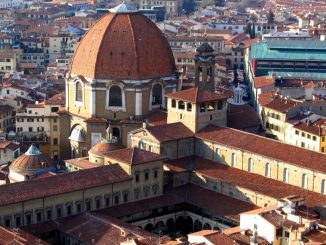The House of the Free Press (Casa Presei Libere), located on Piata Presei Libere 1, is an imposing structure located at the gateway to Bucharest. Still referred to as Casa Scanteii, this accomplishment of architect Horia Maicu opened in 1956 to hold the majority of Bucharest’s printing presses. To this day it is still used for a very similar purpose, except now it is also the home of the Bucharest Stock Exchange.
The 25 metre Arch of Triumph (Arcul de Triumf), located on Piata Arcul de Triumf, is the place to go for spectacular views over Bucharest. This is thanks to an interior staircase by which one can climb to the summit. When it opened in 1922, it was a wooden structure – however, in 1936 it was covered in granite. It is a mark of respect to Romanian soldiers who were sent to fight in the first World War, and is the city‘s answer to the monument that stands proudly in Paris. Although Petre Antonescu was the architect responsible for its design, native artists such as Ion Jalea, Constantin Medrea and Constantin Baraschi were also behind the beautiful decoration.
Opened in 1692, Victory Avenue (Calea Victoriei) was the first of Bucharest’s streets – many say it is also the most attractive. It originally acted as a bridge between the Old Princely Court and Mogosoaia Palace. In 1878 it was named Calea Victoriei in honour of Romania’s supremacy in the War of Independence. It subsequently became a hub of fashion and style in the years leading up to World War II. A number of Bucharest’s prettiest buildings can be found on the route leading from Piata Victoriei to Piata Natiunilor Unite, such as the Military Club, CEC Headquarters, National History Museum and neoclassical Royal Palace (Palatul Regal), located on Calea Victoriei 49-53. Over the course of a decade the Royal Palace was the residence of King Carol II and later to his heir, King Mihai I. It took ten years to build and was the site of a coup led by the teenage King Mihai in World War II against the pro-Nazi government. Subsequently Romania was to be counted amongst the Allies. Nowadays it serves as the Romanian National Art Museum.
The exceptionally elegant Cantacuzino Palace (Palatul Cantacuzino), located on Calea Victoriei 141, was the home of Prime Minister Grigore Cantacuzino, counted amongst Romania’s richest people in the late 19th century. He commissioned architect Ion Berindei to design what he deemed to be a suitable residence for a man of Cantacuzino’s status. This French-inspired building took two years to build and utilises a mix of neoclassical and art nouveau styles.
Revolution Square (Piata Revolutiei) became infamous around the world when Romania’s people gathered here on December 21, 1989 to fight back against Nicolae Ceausescu. He fled the Communist Party Headquarters in a helicopter, caught red handed by international camera crews and photographers. Later that day he was taken into custody. The Romanian Athenaeum, Athenee Palace Hotel and Kretzulescu Church all face the Square.




